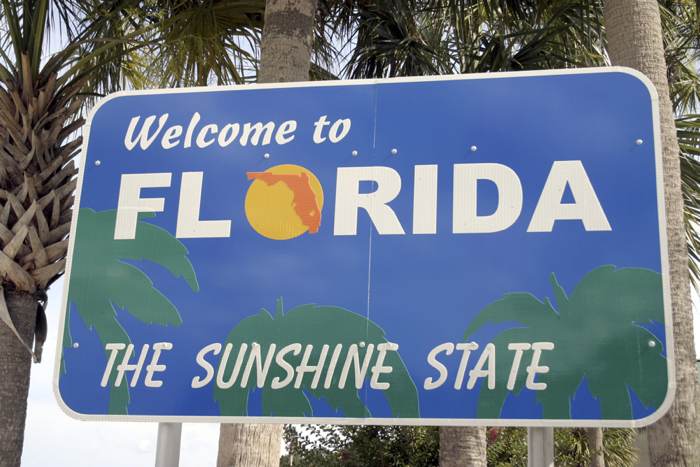Florida’s property insurance crisis raises taxpayer risk from hurricane Ian

The challenges that have been and continue to be faced by Florida’s property insurance marketplace effectively raise the risk of more financial impacts for Florida’s taxpayers, should a major loss event occur from hurricane Ian, it seems.
Hurricane Ian is heading for the Florida Peninsula and as we explained earlier, the outcome of that has the potential to drive a double-digit billion dollar loss event to the state’s insurance and reinsurance market.
But while there is a natural focus on how impactful this event could be for our insurance, reinsurance and insurance-linked securities (ILS) market readers, it’s important to also consider that Florida, the property insurance market that is being targeted by this hurricane, is not in the best state and has been called dysfunctional at best.
Measuring taxpayer exposure to hurricanes is way outside of Artemis’ pay-grade, but we feel it’s an important issue to highlight, as this year, perhaps more than ever before, the ramifications of a major hurricane industry loss could come back to bite the taxpayers the most.
This year Florida’s property insurance market challenges came to a head, with the most difficult reinsurance renewal conditions in years, what some have called true hard market pricing, and the upshot is that there may actually be less private reinsurance market exposure in Florida now than there has been in recent years.
Because Florida’s domestic property insurers have been able to buy less reinsurance this year, with many buying the absolute minimum they can get away with, while at the same time the insurer of last resort Florida Citizens bought far less reinsurance than it wanted, there is less reinsurance capital protection to hold back the effect of storm losses from Florida’s taxpayers.
Add to that the fact the legislative put in place the $2 billion Reinsurance to Assist Policyholders (RAP) program this year, which was authorised as part of the special session in late May and acts as a kind-of lower-layer to the Florida Hurricane Catastrophe Fund (FHCF), this again means more risk sits closer to where taxpayers could be impacted.
Florida Citizens had been hoping to buy somewhere over $3.5 billion of reinsurance and risk transfer from catastrophe bonds this year, but in the end only $1.25 billion of new risk transfer was purchased.
Citizens still has another $1.285 billion of catastrophe bond backed reinsurance outstanding, but overall the risk transfer program is far smaller than it was in previous years, largely due to the elevated costs at the reinsurance renewal which made buying more cover less appealing.
While Citizens has all its other funding sources in place, alongside the decline in private market reinsurance and cat bond cover, Citizens has rapidly growing exposure.
It hit 1 million policies for the first time since 2013 recently, and this is growing fast, with the Tampa Bay and west coast Florida Peninsula an area of rapid growth for the insurer of last resort, we understand.
While Citizens has significant claims paying ability, the fact its reinsurance has declined does suggest that taxpayers stand a little closer to the risk than they used to, given the chance of assessments being levied may have increased, alongside the higher exposure in the Citizens risk pool.
As said, we’re not able to calculate whether the chances of assessments are greater because the reinsurance is slimmed down, but certainty Citizens surplus is more exposed and the upshot has to be that a really major loss could see greater pressure to pass on costs to taxpayers further down the line.
Effectively, with less reinsurance having been purchased across portfolios of Florida property risk and more risk being shouldered by the state fund and insurer of last resort, it seems taxpayers have shifted a few steps closer to hurricane risk in Florida.
There’s also the risk of higher costs falling to to taxpayers after a storm like hurricane Ian, should the loss be significant.
A hurricane Ian industry loss in the tens of billions could just serve to further squeeze the Florida insurance market, raising reinsurance costs even higher in the state and pressuring already thinly capitalised insurers, plus Citizens.
A major industry loss would likely drive more rate increases at the primary level, perhaps also some carrier failures, while also eroding capital from the state’s hurricane fund, the FHCF, perhaps denting Citizens capital base significantly and maybe wiping out the new RAP fund as well.
All of which would effectively raise the risk that Florida taxpayers find themselves on the hook for paying for more of the recovery, whether in higher premiums, or assessments, or simply through the tax that a dysfunctional property insurance market levies on the state’s residents (as it surely does).
We haven’t even mentioned litigation, loss amplification and claims creep, all of which the legislative has had ample opportunity to try and solve, but at this stage few have the confidence that the reforms enacted to-date are set to make a particularly big difference very quickly.
Hurricane Ian could be a real test of the state’s legal system, showing up how effective the reforms have been, as well as how well reinsurance and ILS interests have adjusted their contracts and exposure levels to deal with this uncertainty in the state.
The state of Florida’s property insurance marketplace surely puts taxpayers closer to the risk than they really should be, perhaps hurricane Ian (whether a major loss event or not) can provide legislators the impetus to solve more of the issues in that marketplace and to effectively move taxpayers further away from the risk, while encouraging the development of a more functioning insurance and reinsurance ecosystem.
Read our latest on hurricane Ian here.






